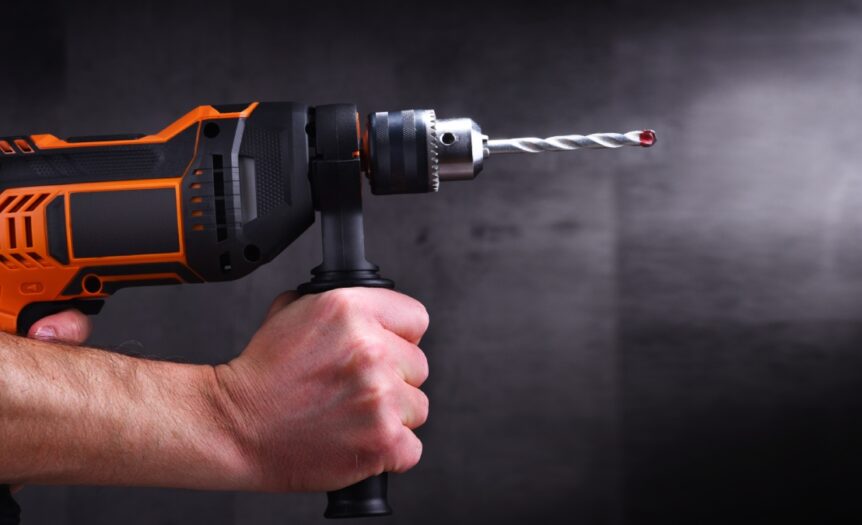When contractors use drills on projects, certain challenges can compromise their efficiency and safety. Knowing about these common issues can ensure your projects run more smoothly and help you keep your tools in good condition. Review these five problems you should avoid when using your drill on a job site.
A Broken Drill Bit
One problem you should avoid is breaking your drill bit, which can delay you from finishing the job and even cause damage to the work material. To avoid this, use the correct drill bit for the job, and be careful with how much force you apply when drilling. If you don’t push forward with the drill and instead try to do it from an angle, you may break the bit. Finally, inspect the bits for damage after a day of work, and buy new ones when your current bits wear out.
Your Drill Overheats
Overheating is a common problem that can reduce the lifespan of your drill. This issue often arises from continuous use without breaks. Allow your drill to cool down between uses to prevent overheating.
Don’t overlook the role of coolant in drill bit performance to stop this from happening to your tool. It also encourages you to drill at the right speed, which reduces heat generation and keeps your drill running efficiently.
Using a Loose Bit
When your drill bit is loose, it affects precision and increases the risk of accidents. Always secure the drill bit tightly in the chuck before starting a job. A loose bit might indicate wear on the chuck, so inspect it periodically. If you notice damage or degradation, immediate replacement will prevent further issues and ensure your safety while you work.
Drilling Holes Larger Than Necessary
Another problem you should avoid when using your drill is drilling holes larger than necessary. This wastes time and materials and can compromise the structural integrity of the workpiece.
Always select the right bit size for the task. Double-check measurements before you begin, and use guide marks or jigs when drilling. These precautions will result in cleaner, more accurate holes that meet your project specifications.
Your Tool Makes a Loud Squeal
A drill that emits a loud squealing sound is a clear sign of distress. This noise often results from poor lubrication or worn bearings. Regular maintenance, including cleaning and oiling, can prevent such issues. Address any unusual sounds immediately, as ignoring them could lead to more severe damage or even tool failure!
Avoiding these common drill problems ensures a safe and more productive work environment. Your challenges will become more manageable, and successful project completion will be within reach!










 Deering Estate
Deering Estate
 Massage Envy South Miami
Massage Envy South Miami
 Calla Blow Dry
Calla Blow Dry
 My Derma Clinic
My Derma Clinic
 Sushi Maki
Sushi Maki
 Sports Grill
Sports Grill
 The Healthy Kitchen
The Healthy Kitchen
 Golden Rule Seafood
Golden Rule Seafood
 Malanga Cuban Café
Malanga Cuban Café

 Kathleen Ballard
Kathleen Ballard
 Panter, Panter & Sampedro
Panter, Panter & Sampedro
 Vintage Liquors
Vintage Liquors
 The Dog from Ipanema
The Dog from Ipanema
 Rubinstein Family Chiropractic
Rubinstein Family Chiropractic
 Your Pet’s Best
Your Pet’s Best
 Indigo Republic
Indigo Republic




 ATR Luxury Homes
ATR Luxury Homes


 2112 Design Studio
2112 Design Studio
 Hamilton Fox & Company
Hamilton Fox & Company
 Creative Design Services
Creative Design Services
 Best Pest Professionals
Best Pest Professionals
 HD Tree Services
HD Tree Services
 Trinity Air Conditioning Company
Trinity Air Conditioning Company
 Cisca Construction & Development
Cisca Construction & Development
 Mosquito Joe
Mosquito Joe
 Cutler Bay Solar Solutions
Cutler Bay Solar Solutions


 Miami Royal Ballet & Dance
Miami Royal Ballet & Dance
 Christopher Columbus
Christopher Columbus
 Pineview Preschools
Pineview Preschools
 Westminster
Westminster
 Carrollton
Carrollton
 Lil’ Jungle
Lil’ Jungle
 Frost Science Museum
Frost Science Museum
 Palmer Trinity School
Palmer Trinity School
 South Florida Music
South Florida Music
 Pinecrest Orthodontics
Pinecrest Orthodontics
 Dr. Bob Pediatric Dentist
Dr. Bob Pediatric Dentist
 d.pediatrics
d.pediatrics
 South Miami Women’s Health
South Miami Women’s Health

 The Spot Barbershop
The Spot Barbershop
 My Derma Clinic
My Derma Clinic




 Miami Dance Project
Miami Dance Project

 Rubinstein Family Chiropractic
Rubinstein Family Chiropractic
 Indigo Republic
Indigo Republic

 Safes Universe
Safes Universe
 Vintage Liquors
Vintage Liquors
 Evenings Delight
Evenings Delight





 Atchana’s Homegrown Thai
Atchana’s Homegrown Thai
 Baptist Health South Florida
Baptist Health South Florida

 Laser Eye Center of Miami
Laser Eye Center of Miami
 Visiting Angels
Visiting Angels
 OpusCare of South Florida
OpusCare of South Florida

 Your Pet’s Best
Your Pet’s Best





 HD Tree Services
HD Tree Services
 Hamilton Fox & Company
Hamilton Fox & Company


 Creative Design Services
Creative Design Services